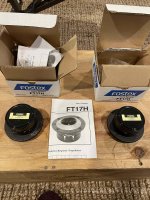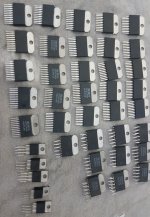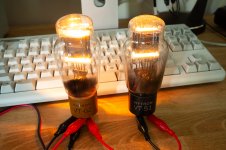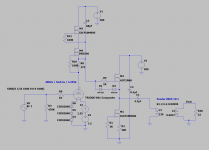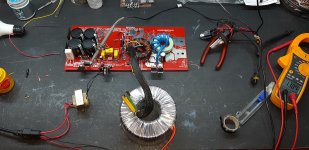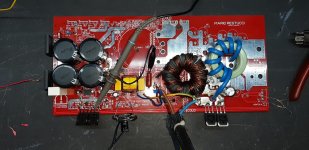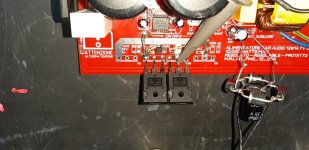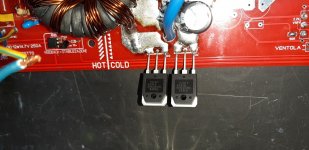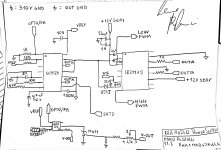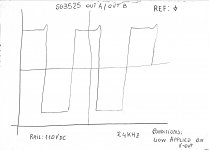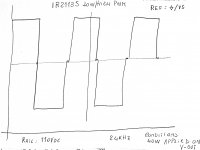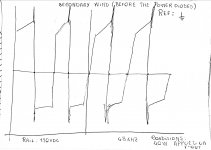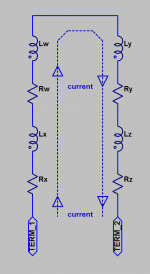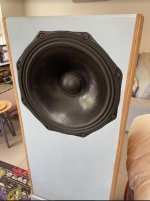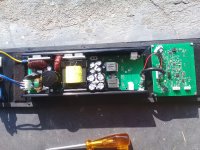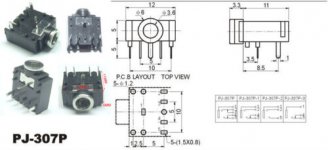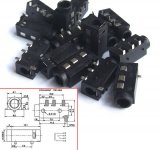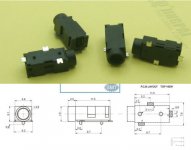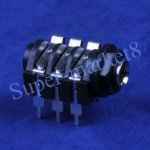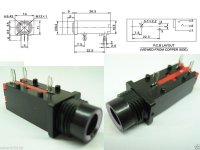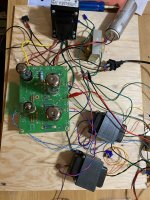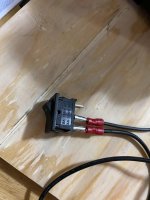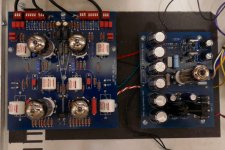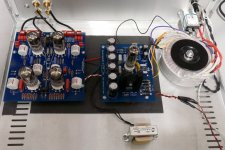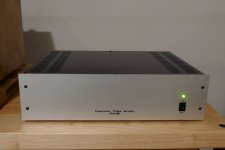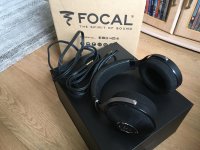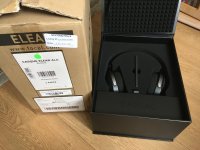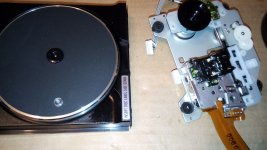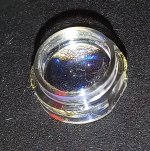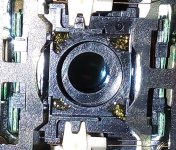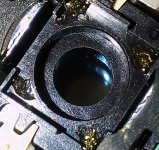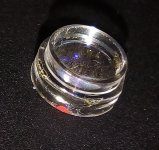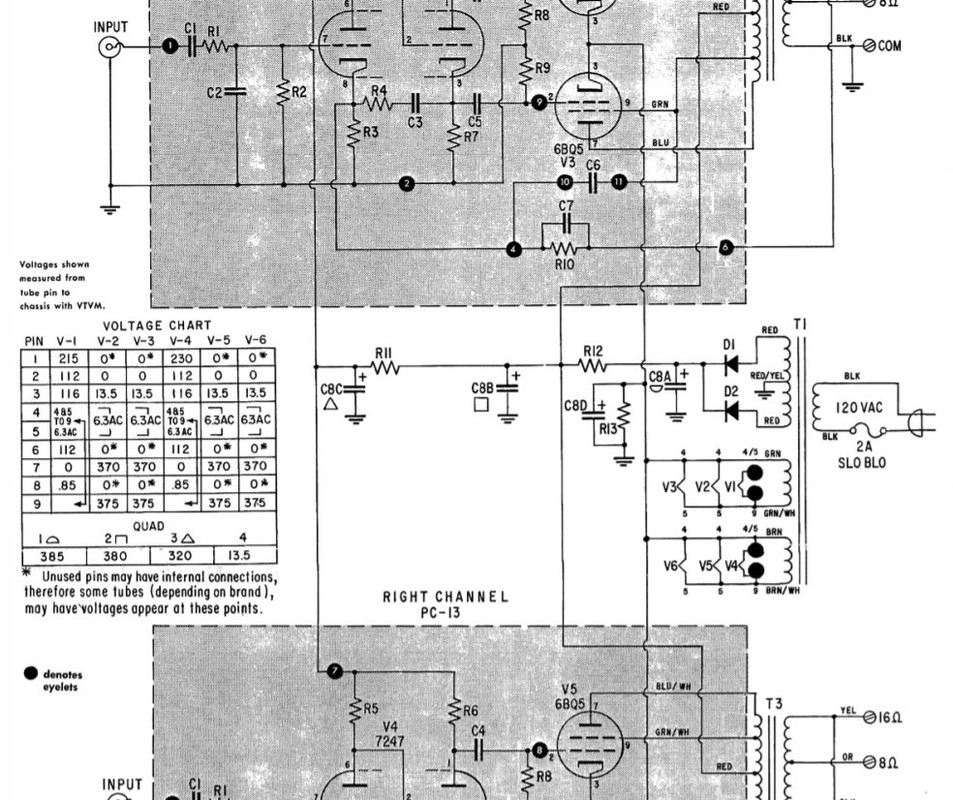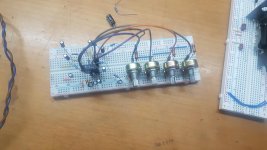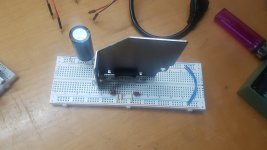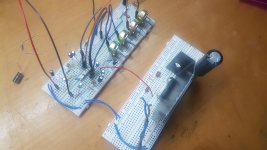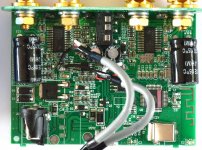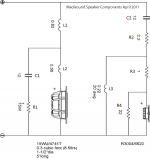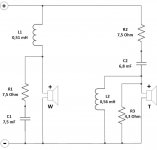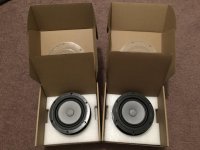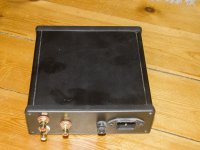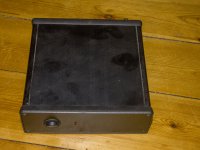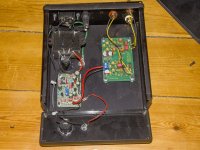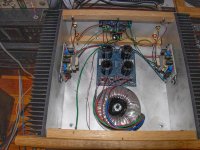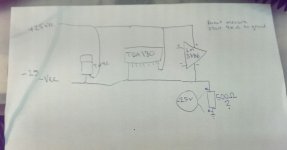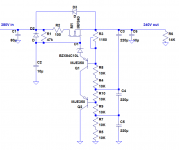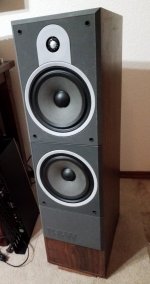Hello everyone!
I am building a switching power supply to be used in the CAR AUDIO field, feeding it from the wall network, obtaining an adjustable output voltage from 12.4v to 14.4v (and beyond).
I made a project from scratch.
The power supply uses the SG3525 PWM controller which drives an IR2113S driver which in turn drives a pair of very powerful IGBTs.
The power supply is regulated, and keeps its output stable even when we are absorbing almost all the deliverable current (or at least it should) and through a potentiometer that adjusts the reference of a TL431 which in turn drives the LED of an optocoupler, I get voltage regulation and setting.
I made the PCB and installed the main components to start testing it, currently I have not installed the protections (short circuit and thermal) because I was interested in knowing if at least it did its primary job (produce enough voltage and current as I thought it would).
After doing everything, instead of immediately using the direct electrical network, I used a transformer to isolate myself from the electrical network and obtain a lower voltage to avoid disastrous failures, in fact, with 78Vdc on the large capacitors, everything was fine, the power supply produced the voltage desired, but obviously little current, in fact by loading the power supply with a 40w car bulb, the voltage dropped to 7 volts.
So, I used a bigger isolation transformer, and with 110Vdc on the big capacitors, still all right, and the voltage was also more stable, the current delivered, higher, and the voltage dropped a lot less (down to 10v).
Everything seemed ok to me, there was no abnormal heating anywhere, so I switched to direct mains, first with a 220V - 40w incandescent bulb installed in place of the primary fuse and I got a lot more stability, but obviously when trying to absorb more current, the bulb started to light up and choked everything, then I replaced the bulb with a 47ohm 10w resistor, and I still got some improvements, then finally I decided to remove everything and install the fuse, now the problems started, because the power supply turned on without problems, but as soon as I connected the car bulb in output, one of the two internal diodes (of one of the 2 double power diodes) spontaneously shorted out suddenly, and having no protection systems I broke the two IGBTs and the driver accordingly.
Cabbage! everything was going well, I would have also installed the protections and I could have fully tested my power supply, but something went wrong. Maybe the output filter? Perhaps the absence of Snubber on the output power diodes? It wasn't just a coincidence, because I fixed everything, and it happened again. I will post the schematic and some drawings of the waveforms that I saw on the oscilloscope before the failure, I have drawn them by hand, because it all happened yesterday, and I did not have the thought of taking pictures of the screen.
And of course, this is the videotest:
video
thanks to all,
Aids are appreciated!
Mario
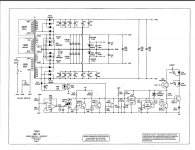
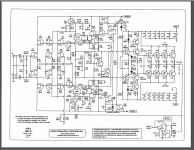



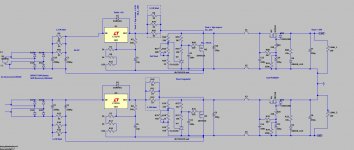

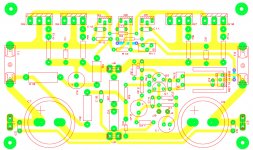
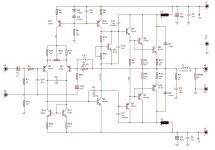
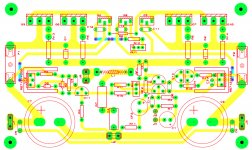
 )
)
